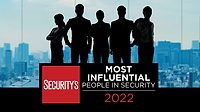Tackling pressing national security challenges is Andrée Rose’s passion as Project Director at The Defense Personnel and Security Research Center (PERSEREC), a Department of Defense (DoD) entity dedicated to improving the effectiveness, efficiency and fairness of DoD personnel suitability, security and reliability systems. Rose is also a member of The Threat Lab, DoD’s counter-insider threat program that integrates social and behavioral sciences into the counter-insider threat mission space and meets the research, training and education needs of the global counter-insider threat community.
But the DoD wasn’t where Rose thought she’d end up when she was pursing her college degree. “I always thought I would become a probation officer or work in some other role in the criminal justice system,” Rose says. However, after completing her double major in criminal justice and sociology and then a Master’s in Public Administration at Cal State Fullerton and a Master’s in Criminal Justice at SUNY Albany, Rose was hired as a research analyst for Northrop Grumman.
In 2012, she accepted a position at PERSEREC. While PERSEREC’s mission was to conduct social science research to find ways to improve the efficiency, effectiveness and fairness of DoD’s personnel security program, Rose says that PERSEREC’s mission has evolved since the 1980s. “PERSEREC’s mission has broadened to include research on suicide prevention, sexual assault prevention and response, suitability and insider threat,” Rose says.
Since joining PERSEREC, Rose has conducted research in a number of areas related to insider threat, personnel security, military accessions, suicide prevention and the bystander effect — all of which reflect the evolving national security landscape and the growing understanding of social and behavioral science’s role in detecting and mitigating security threats. Social and behavioral sciences are critical to helping the U.S. government assess risk on a range of topics, including terrorism and counterterrorism, as well as strengthen national security into the future.
“All of us in the insider threat and personnel security communities are fully committed to the mission of our organizations and ensuring our organizations remain safe from malicious activities — and sometimes accidental and/or careless activities with negative consequences,” Rose says. “Our goal is to help these individuals and their organizations support safe and healthy work environments.”
With more than 20 years of experience in applied social and behavioral science, Rose has leveraged her extensive network, expertise and research to provide innovative tools and educate diverse audiences about emerging national security threats for the U.S. government and private sector security professionals.
Rose further uses her network to reach out to subject matter experts who can provide insights on issues related to targeted violence prevention, mis- and disinformation, user activity monitoring, safe termination practices, and other national security issues.
Working with her team to tackle insider threat detection and mitigation, Rose has undertaken several initiatives to improve the identification and management of DoD personnel who may pose a safety or security threat. Based on past studies of insider behavior, Rose’s research has helped identify several areas of effective management intervention to mitigate the probability of damaging behaviors. For each area, a series of self-audit questions point to the presence or absence of policies, safeguards or best practices that should be considered by organizational leaders as proactive measures to minimize insider risk.
Another key focus for Rose is tapping into social media for security and suicide prevention. Rose has developed research questions and methodologies that address three main risks in this area. First, the extent to which publicly available electronic information (i.e., social media data and open source content) enhances the personnel security, suitability and insider threat management processes. Second, the extent to which military service personnel are providing signals of their intent to die by suicide in an online environment. And last, current trends in social media and DoD’s response to these trends through its social media policies.
The research, presented to the Office of the Director of National Intelligence (ODNI), Army G-2, Defense Suicide Prevention Office (DSPO) and the Performance Accountability Council Program Management Office, led to funding for the development of social media business rules (e.g., collection of relevant content, while balancing privacy and civil liberties) and recommendations for conducting a standardized process for conducting these types of searches.
“We identified a number of concerning social media posts about depression and suicidal ideation,” Rose explains. Rose and her team have identified and researched concerning social media posts and behavioral reactions from others during her tenure. In an effort to address the online bystander effect, PERSEREC was funded by DSPO to develop the video ‘Simple Things Save Lives,’ to help others identify concerning messages online and how to be better prepared to help them through a tough time.
In addition to social media research, Rose is focused on producing research on all forms of extremism. Along with her team, Rose has conducted key research that examines the extent to which personnel security and military accessions screen applicants and recruits for ties to extremism.
Submitted to Congress in October 2020, the report led to additional funding for research examining white supremacists and other domestic violent extremists. “In response to the training recommendations in the report, we are currently developing a training course to recognize symbols and images associated with violent extremist ideologies and groups,” Rose says. The effort is a Controlled Unclassified Information training that should be released to federal agencies in 2022.
Evidence-based recommendations stemming from Rose’s research have been crucial to helping shape solutions to significant national security challenges faced by the public and private sectors. These findings have also been translated into educational materials and coursework to train new and established security professionals alike.
Outside of PERSEREC and the DoD, Rose is recognized among her peers in the security industry for connecting key players in government, academia and industry and fostering an inclusive environment for sharing best practices. “Connecting with colleagues and counterparts in other government agencies and academia allows us to look at a challenge or an opportunity with a broader lens,” Rose explains. “With a more robust set of tools, and we are able to propose multiple courses of action for consideration.”
In addition, Rose has worked with the International Association of Chiefs of Police (IACP) since 2009 and is currently a member of its Private Sector Liaison Section (PSLS).
“I’ve found that collaborating with [IACP] serves as a force multiplier. We get word out across a huge community — which is very similar to DoD in that law enforcement positions are sensitive — about an issue that can be of concern to both DoD and law enforcement,” Rose says. “We get this massive brain trust to provide critical insight through surveys, focus groups and field interviews.”
Rose’s inclusive and collaborative approach has brought together industry thought leaders and multidisciplinary teams to keep pushing critical research initiatives forward.
Disclaimer: The article represents Rose’s personal opinions and does not necessarily represent the position of the Department of Defense.



